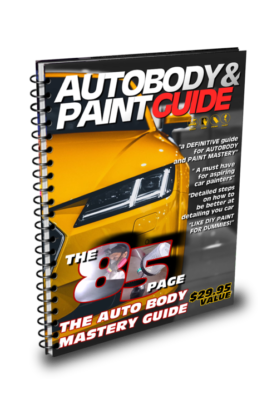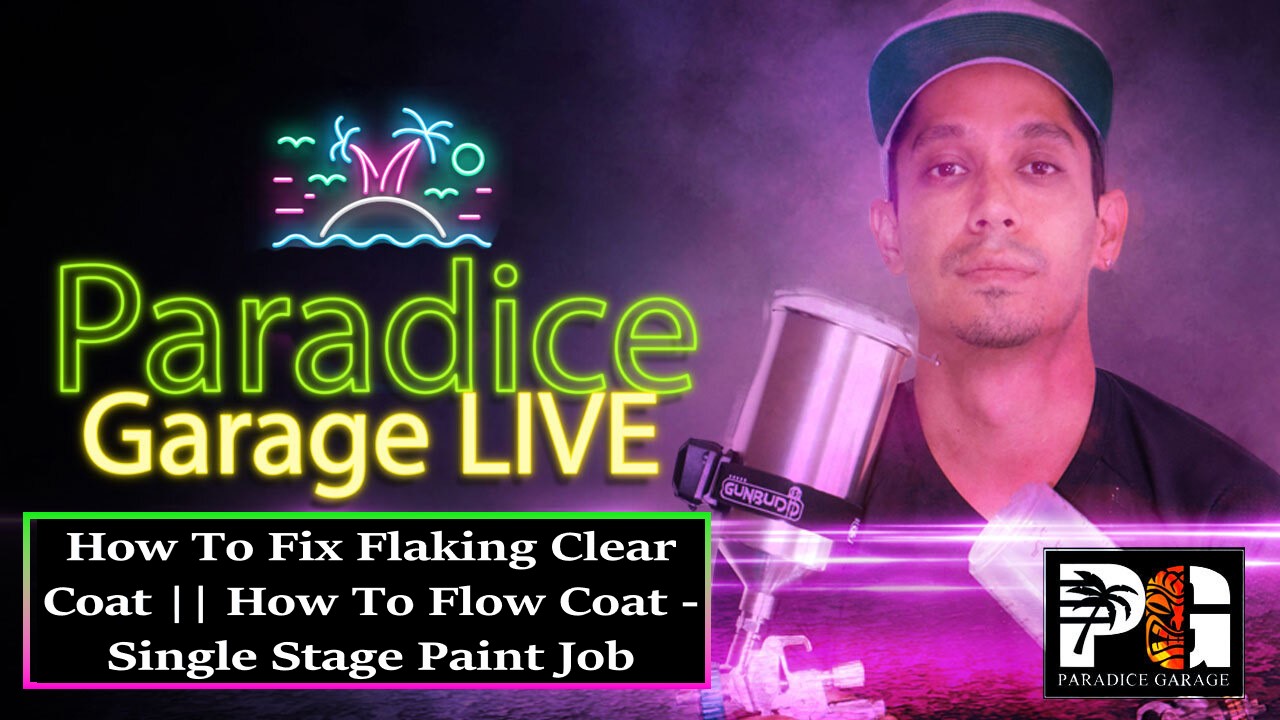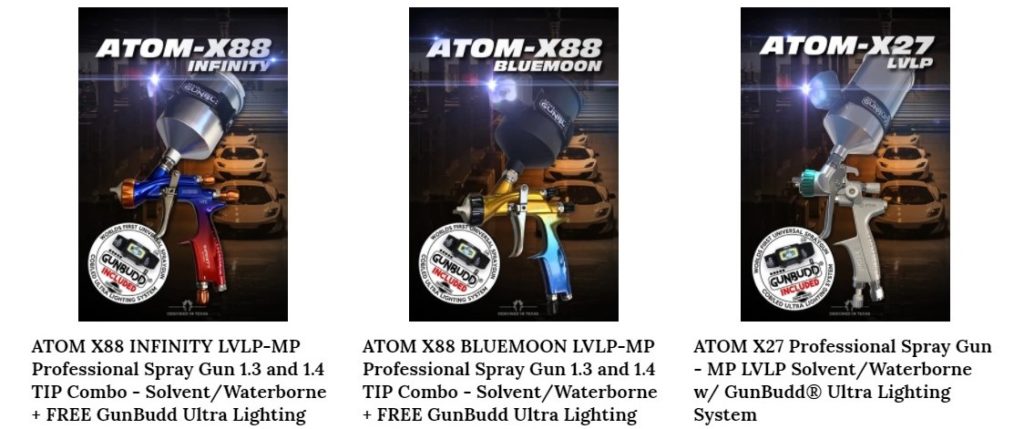Flaking clear coat is an annoyingly recurrent problem for many car owners but the solution isn’t all that difficult to implement. Flaking clear coats can be caused by various factors, and sometimes the conditions can become so severe. There are quick fixes you can try on your own first, though, before taking things into your own hands. Read this post for tips on how to repair areas of clear that are flaking off, how to flow coat a single-stage paint job, and more paint repairs. Get Free Auto Body Training Guides and Videos here and don’t forget to LIKE and SUBSCRIBE to my YT channel. Also, subscribe and stay tuned for new videos on the “G.O.O.D. Van Project” coming out soon.
QUESTION: I have an older car and there’s a big spot on the door and quarter panel where the clear coat is flaking off, what would be the best approach to fixing it?
So basically you could sand that and feather it out with 150 to 180 grit, give or take even if it’s not that bad. You can probably use a 220 and get away with it, feather that whole area out where it’s peeling bad on the quarter panel, and then extended it into the rest of your quarter panel. Also, you could use a finer grit once you get that feathered out, and then I would 2K filler prime that whole area or the whole panel. But you only have to really do that area where you feathered out because sometimes when you’re using a 150 grit you can get down to the metal. And you would block that out with 400 or even use an orbital DA sander 400, go wet or dry, and then you’re ready for paint.
QUESTION: Can I just spray fresh clear over the feathered old clear with no problems?
No, I would definitely not recommend spraying clear over old paint. You’re going through all the process of prepping a panel, you might as well put a new base coat, it’s going to be ready for paint. You might as well put a new base coat on it and then put your clear coat on. Put clear coat over sanded clear coat unless it’s a new paint job and you had to like flow coat.
QUESTION: What grit is the best to flow coat over?
With flow coat sanding 800 grit is a good grip. So if you’re sanding clear coat, you can go 800 grit, even 1000. I wouldn’t go finer than 1000 but 800 is good because it’ll cut the orange peel, and the paint texture to give you a flat surface to flow coat on top of.
The clear coat will fill the 800 scratches, you’re not going to see it, it’ll fill right in and melt right in. So 800 if you feel like you want to go a little bit more, you can go 1000. But 800 is proven to be a good flow coat grit to spray over.

www.learnautobodyandpaint.com/
QUESTION: How do you feel about flow coating a single-stage paint job?
So you’re talking about flow coating with clear? I feel great about it. If you want to do that, you could do that, no problem at all. You could absolutely lay a urethane clear coat on top of a single stage to give it more protection. And then you can actually color sand and buff that out too if you want. If you’re going to do a clear coat flow coat over a single stage paint job. Give it about a week to set up, so if you painted your single stage, let it cure for a good seven days because you don’t want to end up with solvent pop.
After you paint the car, no matter if it’s a base coat, clear coat, or single-stage, it takes a little while for your paint to fully cure. And if you don’t let it fully cure, and you put more paint on it or clear coat on it too soon your initial coat will have a hard time curing. You might end up with some solvent pop issues, and some reaction on the new topcoat that you put on. So it’s always good to let your first coat dry as long as possible. Your clear coat or your single-stage normally 2-3 days you’re okay.
But I’ve painted cars and for a week or 10 days out you can still smell the paint on a car. Like my van, I don’t really smell the paint anymore. It’s been sitting in the sun for over a week outside and it’s fully cured. So if I want it to flow coat, now would be a good time. I could definitely sand that thing down, rub/wash it down with 800 to 1000, and then put two coats of clear on it.
QUESTION: I’m going to do a base coat and clear. Should I use the Atom X27 LVLP for both paints?
Well definitely I feel the Atom X27 is a better gun, I think the Atom X27 is a superior spray gun. I would do a base coat clear coat with that same gun. And speaking of spray guns, if you guys are looking for great spray guns, check out the same spray guns that I use, the “Atom X Spray Guns” at www.zoolaa.com. And every gun that you invest in, they also hook you up with a free GUNBUDD Ultra Lighting System which I use every single time I paint the car. It’s amazing!😎
–
-TONY
Top Quality Spray Guns & Refinishing Products GUARANTEED!

🌐For more helpful links:🔎
Paint Peeling Repair | Paint Gun Settings | Best Sandpaper Grit and More Autobody Q&A
How To Deal With Flaking Paint On A Car?😨🤔 || AutoBody Q&A
How To Sand Your Car For Paint: Wet and Dry Sanding Grit Using DA/By Hand || Autobody Q&A
How To Flow Coat | Spray Painting Tips – Autobody Q&A
Primer, Base/Clear Spray Gun, Sand to Bare Metal or Not? Causes of Orange Peel? | More Autobody Q&A

